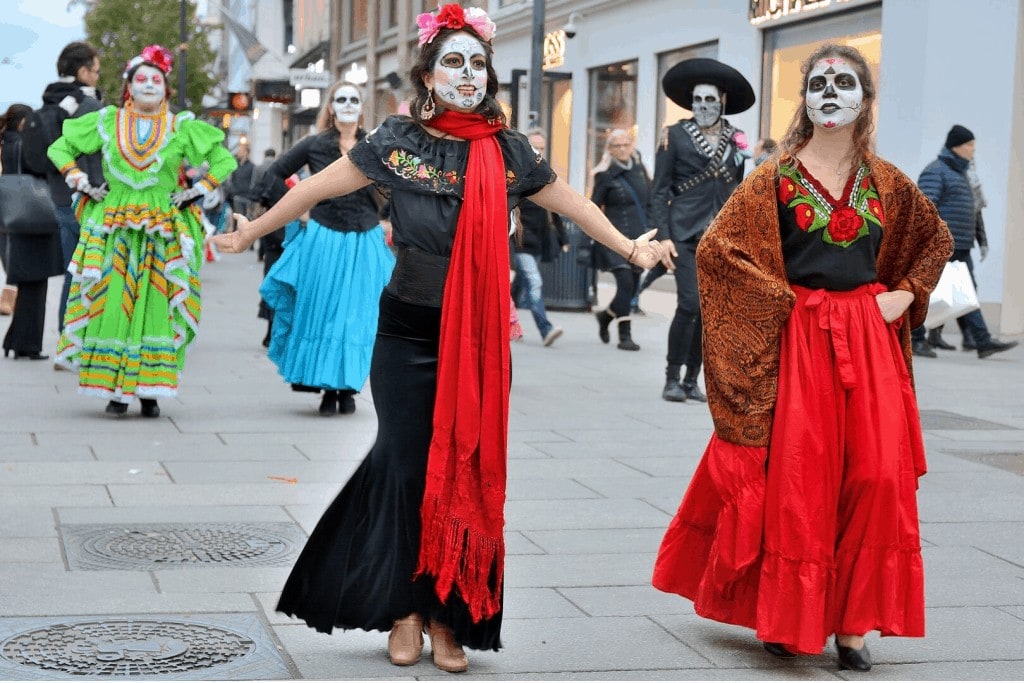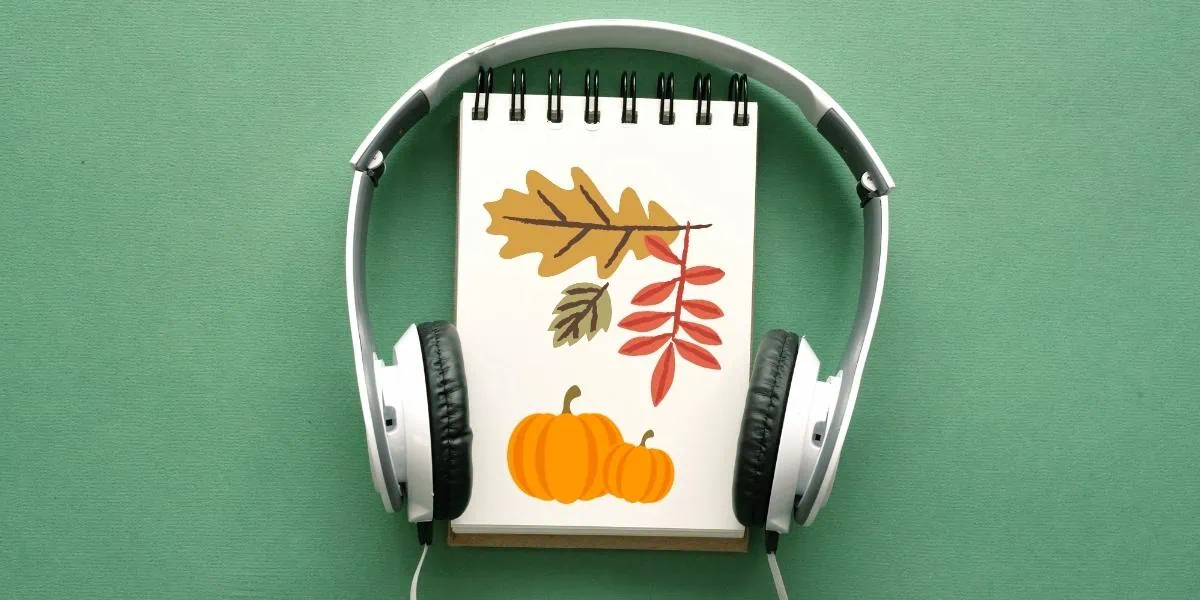Day of the Dead in Latin America: Customs and Traditions
Inside: A look into customs and traditions for Day of the Dead in Latin America.
Día de Muertos traditions in Mexico are famous across the world. Day of the Dead, however, is celebrated across many parts of the Spanish-speaking world. This post focuses in on common traditions you can find in Latin American countries for Día de Muertos.
Because Day of the Dead is a mix of indigenous practices and Catholic traditions, you’ll find some variation in how different Latin American countries celebrate. Mexico and Guatemala draw on ancient Aztec and Mayan rites, while Andean places like Bolivia and Peru still bear the influence of Incan practices.
Many traditions are local as well, and vary from city to city. Some places use the phrase “Día de Muertos,” while other prefer a more discreet term like “Día de los Difuntos” to refer to people who are no longer living.
There’s a lot of overlap in how different Spanish-speaking countries remember their loved ones on Day of the Dead, however. As you’ll see, families in most places use November 1 or 2 to visit cemeteries, bearing flowers and taking some times to tidy or sit by the tombs of family members.
The common thread is that Día de los Muertos is meant to be a vibrant celebration of life; a time when the gap between earth and heaven shrinks, and families take the time to remember their loved ones. Read on to see more about traditions throughout Latin America!

Related: 50 Day of the Dead Activities and Resources
DAY OF THE DEAD IN LATIN AMERICA: COMMON TRADITIONS
This is not an exhaustive list of every country and custom, but an introduction to well-known traditions in many different countries. If you have customs and notes to add, please share them in the comments below!
(If you’d like the information in this post in a lesson format for your Spanish classroom, I have a related Google Slides product in simple Spanish, with information, pictures, and links embedded right into the presentation. It includes some worksheets for students to take notes and record key phrases/information. Grab it for $3!)
Here are the countries included. Click on any country name to jump to that section:
Día de Muertos en Centroamérica
For a very quick and comprehensive introduction, this video highlights customs from several neighboring countries to Mexico.
This one compares and contrasts between Mexico and three South American countries:
DAY OF THE DEAD IN MEXICO
Nov. 2 (Día de Muertos) is not an official public holiday, though many businesses close.
Mexico is most famous for Día de los Muertos, which grew out of both indigenous practices (from Aztec and Maya culture, among others) and Catholic traditions. It’s where you’ll see lavish parades and the classic Catrinas and painted faces in the forms of skeletons.
People commonly visit the cemeteries for Day of the Dead, decorate the tombs, and also create altars in their homes in memory of the those who have passed on– and also welcome them back, on the 1st and 2nd of November. When you see pictures of these altars, they are typically from Mexican homes are decorated with papel picado, marigolds, crosses, photos, candles, incense, and favorite foods and objects from their loved ones.
For more information in Spanish, read Día de los Muertos en México.
DAY OF THE DEAD IN GUATEMALA
November 1, Día de Todos Los Santos, is an official holiday in Guatemala.
Guatemala draws from similar indigenous practices to Mexico. Many people celebrate with altars in their homes as well, and use the day to visit the cemeteries, for cleaning and decorating their family tombs. Many bring a fiambre as they spend their day there, or a lunch made up of cold foods to eat together at mid-day.
A special Guatemalan tradition includes the barriletes grandes, huge colorful kites made from paper and bamboo each year. These kites represent the connection between heaven and earth, and traditionally were thought to help guides the spirits back to earth and find their families.
Some communities also hold horse races.
To read more information in Spanish, see Día de los Muertos en Guatemala.
A 5-minute introduction to Día de Todos Los Santos that shows a variety of customs:
DAY OF THE DEAD IN BOLIVIA
November 2, Día de Todos los Difuntos, is an official holiday in Bolivia.
As in other Andean countries, Día de Todos los Santos customs in Bolivia draw from indigenous rituals, back to the time of the Incas and before. Mummification was a common practice, with an annual ritual of taking out buried relatives to feed and dress them, and hold a procession through the streets. They also buried them with all the goods they would need as they journeyed back to the land of the dead.
Today, tantawawas de pan are an essential part of Day of the Dead. They can be made in the form of babies, but also are made in the shape of the sun, the moon, stairs, horses, and other symbols of life, death, and mother earth. These are sometimes left out the night before to welcome the souls home and guide their journey back.
As older rituals with Catholic traditions, some families began to put together offerings of three levels. Some sources say that souls are believed to arrive at 12 on November 1, and depart at noon on November 2.
Read more in Spanish: Fiesta de Todos los Santos.
Starting at minute 2:30, get a tour of an offering in Bolivia and what each element represents. This would make for a fascinating compare/contrast with a Mexican offering. There is a lot of overlap, but also some distinctions (in this video, families take the altars to the cemetery and share a meal there).
This 15-minute news brief provides a great introduction to Bolivian traditions and their origins:
DAY OF THE DEAD IN NICARAGUA
Nicaragua does not have Día de los Santos listed as an official public holiday.
In most parts of Nicaragua, the main tradition is visiting the graves of family members who have passed away, with some people staying the entire night as well. Many families spend the day praying, cleaning and painting the tombs, and decorating with flowers, and eating lunch together in the cemetery. In some places, people make a carpet of sawdust (alfombras de aserrín) in the city streets or square.
Read more in Spanish here: Día de los Difuntos en Nicaragua.
Beautiful scenes of families spending the day at the cemetery:
This is a 1-minute, super-comprehensible overview for customs in Nicaragua:
DAY OF THE DEAD IN VENEZUELA
Venezuela does not have Día de los Santos listed as an official public holiday.
Day of the Dead is a smaller affair in Venezuela, where the celebration centers on prayers and attending a special Mass. However, many families also visit the grave sites of their loved ones, bearing flowers.
Read more in Spanish here: Día de los Difuntos en Venezuela.
This interview shares memories of Venezuelan traditions and how it has changed in recent years due to instability.
(It was really hard to find informative videos about Day of the Dead in Venezuela. The videos below is only helpful until about minute 2:00.)
DAY OF THE DEAD IN PERU
November 1, Día de todos los Santos, is an official holiday in Peru.
In Peru, Día de los Difuntos is celebrated in all parts of the country. Its distinctive practices stem from the sierra, where people follow indigenous traditions more closely. As in most places, families may make an altar or spend the day at the graves of their ancestors, leaving crowns or flowers by the tombs. Many people make or buy guaguas de pan (or tantawawas), which is bread made in the form of a baby (guagua is quechua for “baby”). They represent the deceased loved ones, and sometimes take other shapes.
Read more in Spanish here: Día de los Difuntos en Peru
Día de Muertos as celebrated in Cusco:
DAY OF THE DEAD IN EL SALVADOR
November 2, Día de los Difuntos, is an official holiday in El Salvador.
In El Salvador, most activities center on spending the day in the cemetery where family members are buried. People will usually clean the graves, decorate them with crowns or flowers, and share a meal together. Some families request special music to honor their loved ones, and many go to a special mass that day.
Read more in Spanish here: Día de los Muertos en El Salvador
DAY OF THE DEAD IN ECUADOR
November 2, Día de todos los Santos, is an official holiday in Ecuador.
Ecuador draws its customs for Day of the Dead from both Christian and pre-Hispanic rituals. Most families will visit the tombs of deceased family members, taking a fiambre of cold lunch food along. Like in Peru, many people prepare tantawawas. They also make a special traditional drink called colada morada, which is made from purple corn, fruits, and spices.
Read more in Spanish here: Día de los Difuntos en Ecuador.
DAY OF THE DEAD IN HONDURAS
Day of the Dead is not an official holiday in Honduras.
In much of Honduras, the center of Day of the Dead is visiting the cemeteries to decorate, paint, and pray by the graves of deceased family members. Many people leave flowers or crowns, and invite mariachis to sing favorite songs. It’s also tradition in some parts to make ayote with panela y canela (squash with sweetener and cinnamon).
Read more in Spanish here: Día de los Difuntos in Honduras.
You may be interested in these related posts as well:
- Day of the Dead Songs Collection
- Día de Muertos Bulletin Boards and Displays
- Day of the Dead Activities for Class
Like it? Pin it!







Para mi cultura, nosotros usualmente celebrar Halloween y decorar nuestros casas con naranja y negro el 31 de Octubre.